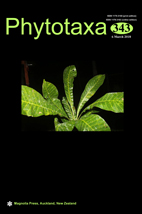Abstract
Tamarix (Tamaricaceae) is an ancient genus in Asia that contains about 54 to 90 species with unresolved taxonomy. Tamarix has major center of speciation in the Pakistan-Afghanistan-Iran-Turkmenistan-S-Kazakhstan-W-China area and in the eastern Mediterranean area. Tamarix species are highly plastic and tolerant to adversity being able to occupy different habitats, thus showing a wide range of ecological variations. Tamarix species have commercial value in the landscape and horticultural trade and are planted for erosion control and as wind breaks. In the genus Tamarix, many species are morphologically very similar probably due, in part, inter-specific hybridization. Tamarix species live in sympatry in Sistan and Baloochestan province of Iran and we have no report on the number of species and their genetic structure. Therefore, we performed morphometric study to delimit the species growing in these two provinces and also used combined ISSR (Inter simple sequence repeat) and RAPD (Random amplified polymorphic DNA) molecular markers to study their genetic structure. Morphological analyses separated plants of 6 studied species in different groups, indicating that morphological characters used can delimit Tamarix species. We also encountered some plants having intermediate morphological characters. AMOVA and Hickory test showed significant genetic differences of the studied species and Mantel test showed significant correlation between genetic distance and geographical distance. STRUCTURE analysis and population assignment test revealed some degree of genetic admixture among the studied species. Assignment tests showed that gene flow mainly occurred among the species that were growing in neighborhood regions. This genetic admixture may be the reason for intermediate morphological characters observed in some the plants.

